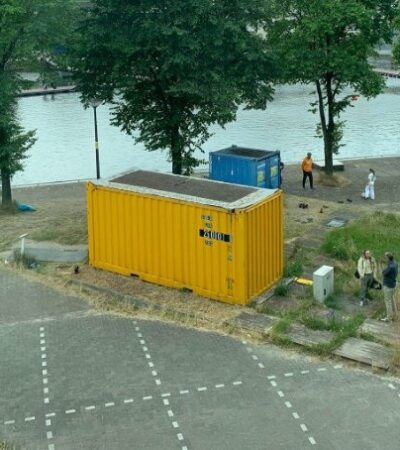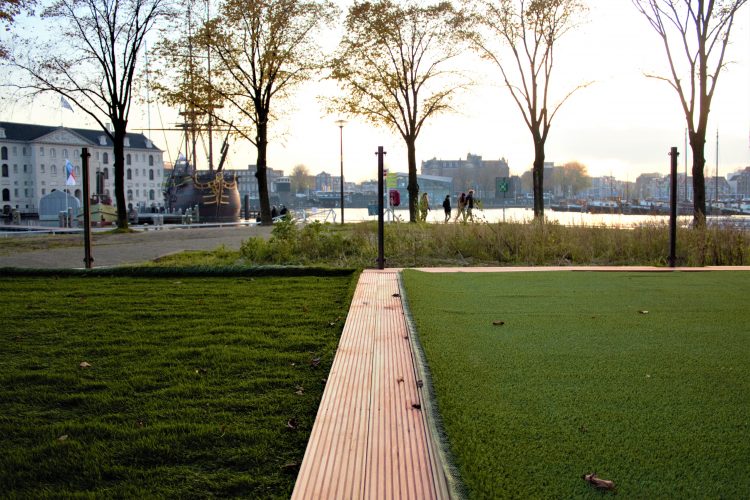Nature on your roof


A special type of artificial grass is currently being tested at Marineterrein Amsterdam as a way to keep athletes and the environment cool, thanks to an innovative water collection system under the turf.
Artificial grass pitches often have negative connotations. The rubber grains may be harmful to your health, but also the heat that they retain and rebound receives a great deal of criticism. Last summer, the temperature above an artificial pitch in Leeuwarden hit 60°C, even though the thermometer at an adjacent natural grass field barely read 30°C.
This needs to be improved. That’s why, since the beginning of September 2019, researchers have been looking into how to create a cooling effect with artificial grass. Building 027 features four elevated test pitches: three with different types of artificial grass and one with natural grass. The artificial grass pitches feature the Permavoid system, the same technology that is used in the Smart Roof 2.0. elsewhere on the Marineterrein. This system helps to protect the pitches, as well as water and drain them. Rainwater is collected and stored under the pitch, which then evaporates through the artificial turf when it is hot, creating a cooling effect above the playing field and in the surroundings.
The sustainable artificial grass pitches are the result of a joint venture between KWR, Veolia, Waternet, Bureau Marineterrein Amsterdam, Dutchblue, Drain Products Europe, Topsector Water, and the Municipality of Amsterdam.
This experiment is part of the Marineterrein Amsterdam Living Lab, the testing programme on the Marineterrein that anyone with a good idea for a solution to an urban issue can get involved in. Following tests carried out on the Marineterrein, a genuine football pitch with the Permavoid system will be opened at the end of September at Laan van Spartaan sports park in the Nieuw-West area of Amsterdam, to allow this technology to be tested in practice.
These companies and organizations are involved in this experiment